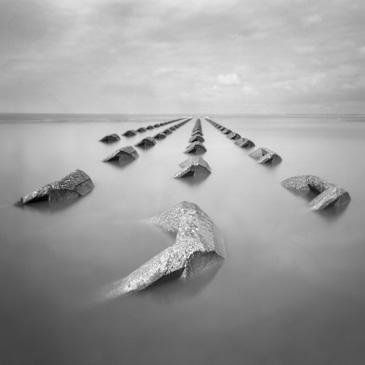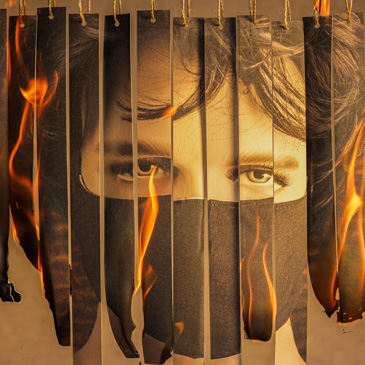Seeing Sideways: Local Landscapes in Infra Red
Few things mark the start of Spring for me quite like dusting off the infra red camera. When the trees are in leaf, and when the sun is a bit too harsh for conventional photography, I realise that it’s time to try that otherworldly black-and-white look. This time, instead of travelling with my camera, I stayed local. I was curious: Would the infra red camera just provide a different aesthetic, or would it help me see the landscape differently?
Reaching up
Olympus E-M5 Mark II (720nm IR conversion) and Lumix G Vario 35-100mm F2.8II at 47.0 mm (35 mm equivalent: 94.0 mm). 1/500s at f/5.6, ISO 200.

This was taken from the middle of a country lane, looking up at a distant hill dotted with trees. I’ve never photographed this view before but I knew that infra red would isolate the trees nicely against the sky, especially with some cloud about. The contrast made the scene feel more dramatic than it ever would in colour, which is probably why I've not photographed it before.
View through a canal bridge
Olympus E-M5 Mark II (720nm IR conversion) and Lumix G Vario 35-100mm F2.8II at 35.0 mm (35 mm equivalent: 70.0 mm). 1/200s at f/5.0, ISO 200.

I know the physics behind infra red: it’s mostly picking up reflected near-IR light. But even knowing that, I’m often surprised by what shows up in the viewfinder. On a lush Spring day like this, the camera feels like a chlorophyll detector: anything green just glows. I’ve taken this picture before in colour, but infra red gives it an entirely different feel.
Tunnel Pool
Olympus E-M5 Mark II (720nm IR conversion) and Lumix G Vario 35-100mm F2.8II at 35.0 mm (35 mm equivalent: 70.0 mm). 1/250s at f/5.6, ISO 200.

Right where the canal disappears into a tunnel, this pool catches the light beautifully. The curving fence, the hills behind, the trees dipping to the water: it’s a naturally photogenic spot. I went for a 16:9 crop to bring focus to the layered mid-ground. In the past, I’ve shot this with a long lens and focused on particular vignettes in the scene but this time I tried a wider view.
Hosta
Olympus E-M5 Mark II (720nm IR conversion) and Olympus 12-40mm F2.8 at 20.0 mm (35 mm equivalent: 40.0 mm). 1/160s at f/5.6, ISO 200.

It’s been such a dry Spring that the hostas in our garden have escaped the usual slug damage. This one, in pristine condition, really lent itself to infra red. I pushed the texture a bit in post to bring out the leaf detail and separate it from the background. It’s not an image that works in colour: the hosta’s too small to fill the frame. But in infra red, I think it holds its own.
Disappearing path
Olympus E-M5 Mark II (720nm IR conversion) and Lumix G Vario 35-100mm F2.8II at 35.0 mm (35 mm equivalent: 70.0 mm). 1/100s at f/5.6, ISO 200.

This is one of those images that turned out exactly as I hoped. I knew the vertical lines of the trees would suit a portrait orientation, and I knew the path would guide the eye. It’s a view I’ve taken before but here, the grass, as it often does in infra red, takes on a snow-covered look.
Break in the stream
Olympus E-M5 Mark II (720nm IR conversion) and Lumix G Vario 35-100mm F2.8II at 35.0 mm (35 mm equivalent: 70.0 mm). 1/500s at f/5.6, ISO 200.

I’ve returned to this spot many times. Sometimes there are cows, but mostly it’s empty like this. I keep coming back because the composition just works: the fence, stream and trees just shout ‘English landscape’. But in infra red, everything feels more lush, more alive.
Wrap up
I’ve photographed these locations countless times, and I walk past these views almost every day with the dog. But looking anew through an infra red ‘lens’ made me see it fresh again, like walking into a dream version of the landscape. That’s what brings me back to infra red each Spring: not just the look, but the opportunity to take a sideways glance at a place I thought I knew. It’s a good reminder that even in the most familiar landscapes, there's still something different to discover.


